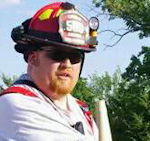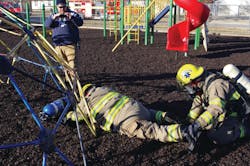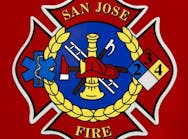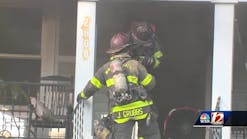Every day, across the country and probably around the world there is some version of training being conducted in a firehouse. Far too often, that training consists of the “old timers” sharing war stories about tactics used on fires current personnel never saw with equipment that the department no longer has. Then you have the senior guys of the house who say “I have been through this training at least twice a year for the last 20 years. I don’t need to be here for this,” and sit in the back of the class, arms crossed, and staring off into space. Worse yet in volunteer departments they just don’t show up. Training has also become the place to show the new guys “how a real fireman does it” with no appreciation for modern, dare I say, safe practices. It has also become a place to pick on the probies and “break them in.” Too often these types of “training” do not include modern tactics, practical knowledge, practical practice, discussion covering the reality of fireground operations, and worst of all leave out safety. It’s also important to remember that in 2011 and 2012, 16 (8 each year) of our brothers and sisters died while participating or as the result of training. Even when we train it’s dangerous!
The U.S. Fire Administration’s (USFA) numbers for firefighter fatalities has traditionally gone down. In 2003 it was 112, in 2012 it was 81. In 2013, the fire service lost 101 firefighters and so far in 2013, the number is six. Training, or lack thereof, is obviously not the main culprit for these numbers. As we all know (and as the USFA says) the number one killer of firefighters is overexertion/stress (56% of all 2012 deaths). What we do in all phases is inherently dangerous in the best of circumstances. You add poor, inadequate or non-existent training and we are increasing the likelihood that bad things will happen. Training is important.
Attitude Towards Training
It is not only the type of instruction that counts. It’s the departments’ or houses’ attitude toward that training, regardless of the type, that sets the tone and determines the quality of training. Everybody is responsible for this culture: from the probie on his first day, to the senior man in the house with 25 years of experience, to the Lieutenant in charge of the apparatus, to the station Captain, Battalion Chief and Fire Chief. The fire service is a zero sum profession. We live or we die by our knowledge, training and our experience. Contrary to popular belief, you cannot have one without the other. Knowledge learned in a book or through practice cannot be truly learned or truly appreciated until you have had to use it in a real-world situation several times. Regardless of how hard instructors try to fabricate real-world experiences, only calls can provide that. Experience is not gained just by running calls. Experience is gained when you use the knowledge you have obtained by putting it to use on calls.
So how do we maximize the time allotted to us for training and most importantly, how do we create or change the culture in our department to make training what it should be? These questions are not easily answered, and the needs of one department are not the needs of another. In general, I believe all of us want and need quality training.
In an attempt to get a broader perspective, I sent out a survey to approximately 30 fire departments. These fire departments ranged from very rural all volunteer to strictly full time in medium to large cities. Departments were asked to describe the negative things about the training culture in their departments. Overwhelmingly, the response was that senior firefighters (non-officers), and the majority of company officers (from lieutenant to battalion chief) view training as a “must do” during the shift or month, and not as an opportunity to impart knowledge to improve operations and safety. These members typically have a lot of negative things to say about training and that “poisons the well” allowing newer members take that same attitude.
When asked to describe the positive things about the training culture in a department. The prevalent response was that new people who come to the department want knowledge. They want to learn and they are eager to obtain and use that newly obtained knowledge.
Senior Firefighters
When asked who the “leaders” were at the company level the response surprised me. The majority of those who responded said that those leaders were not the company officer or any type of officer. It was the senior man of the house or senior members of the house. It was these folks who the vast majority of the ranks take their lead from. Lieutenants are a close second.
When I walk into the training room of a department I am not associated with I am always interested to see the welcome I will get. More importantly, I watch how the senior members and officers of the house will treat each other, interact with each other and treat the training they are about to receive regardless of the topic. I have found that these two groups control (and my small survey showed that they control) the attitude and therefore the culture as it relates to the training of the department or house. If they are disinterested, everybody is disinterested or at least acts that way. If they are resistant to the information being presented, everybody is resistant. Couple that with the fact that when an outside instructor is not presenting, it’s these disinterested/resistant folks who are most likely teaching the bulk of classes. We have a big problem.
Generally, people see training that is commonly done several times a year (vehicle extrication, fire behavior, etc) as redundant, boring and not needed. In the volunteer service, this equates to people not showing up for training. In the full-time departments it equates to the instructor facilitating to a room full of people who are disengaged, not paying any sort of attention and likely had a lot to say about how worthless the training was before the instructor even walked in the room.
This attitude was again likely brought about by company officers and senior members who have “been there, done that.” That attitude was given to the newer members of the department, and the apparent never-ending cycle of poor, inadequate training continues. The chief issue with this is that we are comprising our safety and the safety of the public.
I am not sure I can put into words how vitally important training is, especially for departments that don’t run multiple calls a day, and don’t run the hard calls frequently. When you don’t have the experience of several calls a day, training is your call standard. Training is how to practice and use the necessary skills we all need to do the job. Those departments that run multiple calls a day get the benefit of continually practicing necessary skills in a real-world situation. Those that don’t run multiple calls have to practice with due diligence and train hard for when that call comes out. Not training can cost your life or cost the lives of your brothers and sisters.
It’s important to realize that at the company level the department administration has deemed whatever topic is being taught as valuable, relevant and core to our mission. New, safer ways to do our job are out there. New, safer ways to protect the public are out there. When we don’t pay attention in training we are compromising our safety and the safety of the public. As officers and senior members of the department it is our job to make sure the new folks on the department are taught the right way to do things and the safe way to do things, not just “the way I was taught” or “the way it has always been done.” We do that by taking training seriously. Safety is paramount. Without proper training, without good knowledge, we cannot do what we do safely. There is inherent risk in this job and we all know it. But we can minimize that risk by training hard.
Learning does not stop at the classroom. This is where company officers and senior members can really bring home the training that was taught during a formal class. This is the place where you make a difference in the training culture. Talk about calls afterwards. Discuss why we did this and not this, why this decision was made. During slack times show them the equipment, discuss recent training and go over practical skills. Show them you care about their knowledge base. That goes a long way to building firehouse cohesiveness, effectiveness and unit tightness. If, as senior members and officers of the department, we take that training seriously and instill the importance of doing so to our newer folks the attitude will change. “Attitude is a reflection of leadership….” (Yes, I did just steal that from Remember the Titans.) If you have a poor attitude about training, so will everybody else.
Delivering Training
How an instructor delivers the message can also have a very large impact on how the crews or your department view the training. We will get into that in the next article.
Why should you change the training culture in your department? You should do it because you want to. You care about and love your profession, yourself and your brother/sister firefighters. You should do it because your life and their lives depend on the training you both get inside and outside the classroom. I do it, and I take it far more seriously perhaps then I used to, because I have two beautiful kids, and a wonderful and supportive woman at my side (I love you Sara, Alyssa and EJ). I am smart enough to know on more than one occasion my training has saved my life, the lives of my brothers/sisters, and meant the difference between me coming home or not. A very recent incident has brought this to the front of my consciousness and renewed my dedication to training, and renewed my dedication to crew safety.
You cannot walk into the training room tomorrow with a different outlook or attitude and expect results that day. It takes time, and culture change. You have to hold yourself accountable. You have to walk into that room, and say to yourself, “I want to be here. I want to make a difference. I want my crewmates and brothers and sisters to be safe and to learn, and even though I have been through this training 408 times in the last 25 years I am going to take it seriously, because everybody needs to take it seriously.” The first day, or week, or month you may not see a change. But the truly devoted to our profession will see and observe the change. Person by person the culture will change. As a Captain, I can only control how seriously I take the training. I can order my crew to pay attention. I can order them to be in the room. What I cannot do is order them to process and use the knowledge that somebody is trying to impart to them. All that I can do is show them how I take it seriously. I can show that I need practice just like anybody else, even after my 16 years of attending fire behavior classes and fighting my fair share of fires. All I can do is show them and give them the reason and rationale for taking it seriously. In the end, the change is theirs to make.
Be the agent of change! Don’t stand around while the instructor talks to the junior folks. Be the first to show them a practical skill and stand with them to help them learn it. Don’t sit in the back of the class disengaged, crossing your arms, texting, sleeping or talking. Engage. Listen. Be seen contributing. I love when senior members of the house ask questions in training they already know how to answer. They ask it because the new people need the information.
Train because you want to. Change the culture because it needs to be changed, and because you want to and you can be that agent of change. Do it so you and your brothers/sisters all go home. Do it for your family and do it….because this is the best damn profession in the world!
Stay safe!
Erik Wood is a 16-year veteran of the fire service and is currently a captain with Shawnee County Fire District #2 in Auburn, KS. His responsibilities include supervision of department probationary personnel, development and instructing the department’s “rookie class” and general oversight of the department’s training program. Capt. Wood has been an IFSAC certified instructor since 2005 and he has served as an associate instructor with the University of Kansas Fire & Rescue Training. He is a member of the Kansas State Firefighters Association, State Capital Area Firefighters Association and the International Society of Fire Service Instructors.

Erik Wood
Captain Erik Wood is a 16-year veteran of the fire service. He started his fire service career in the United States Coast Guard in 1997, and is currently a captain with Shawnee County Fire District #2 in Auburn, Kan. In addition to his home department Captain Wood assists in writing policy, procedure and standard operating guidelines for several departments. In his current role, responsibilities include supervision of department probationary personnel and development and instruction of the department “rookie class” as well as having general oversight of the departments training program. Captain Wood has been a IFSAC certified instructor since 2005. He has served as an associate instructor with the University of Kansas Fire & Rescue Training Institute where he taught Firefighter 1 & 2 national certification courses, and served as a exam site evaluator for national certification. Captain Wood is currently a member of the Kansas State Firefighters Association, State Capital Area Firefighters Association and the International Society of Fire Service Instructors. He is currently married to his wonderful wife Sara who is the NFIRS State Program Manager for Kansas with the Office of the State Fire Marshal, and has two wonderful children Alyssa, and EJ and they reside in Auburn.






